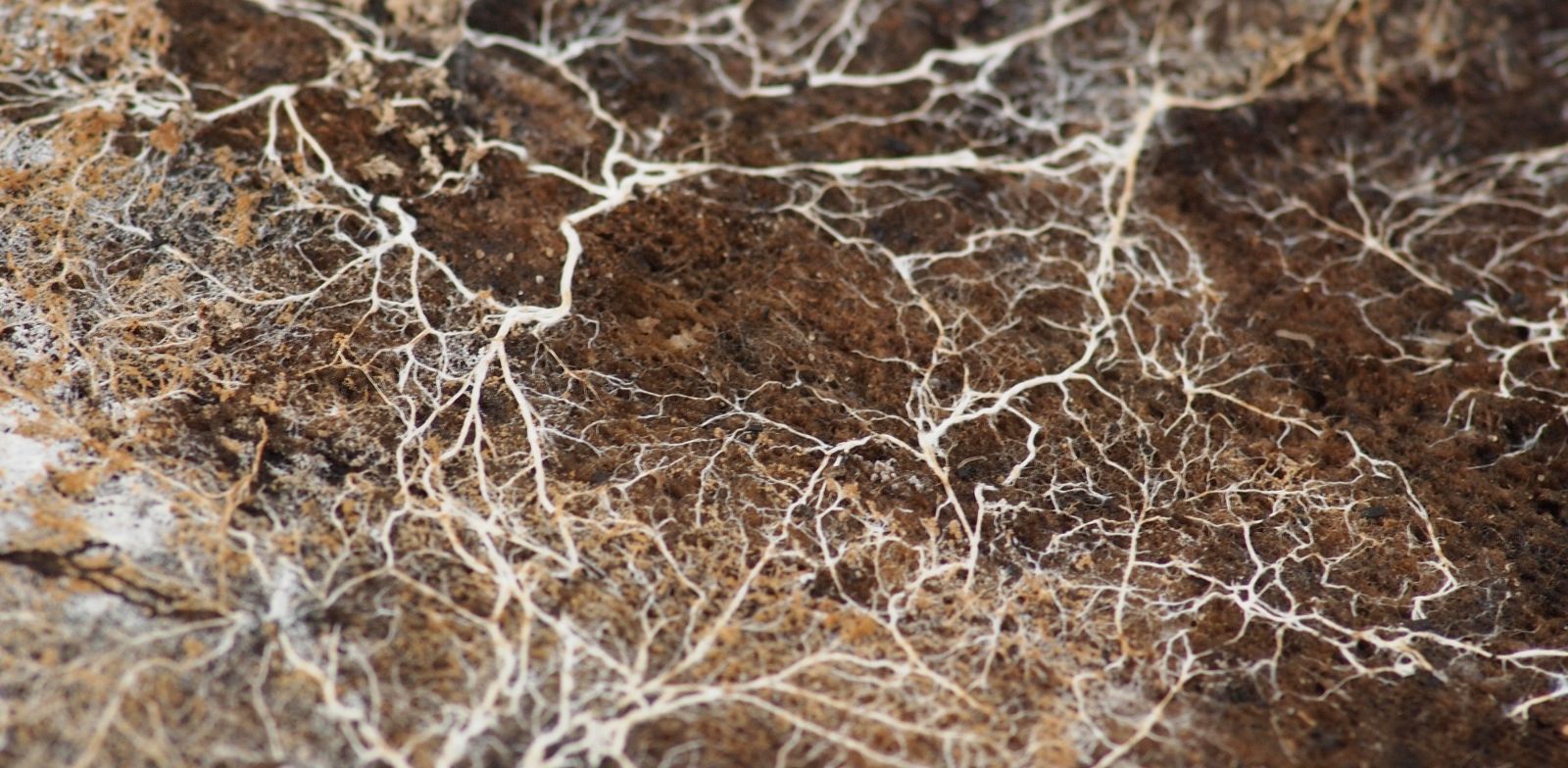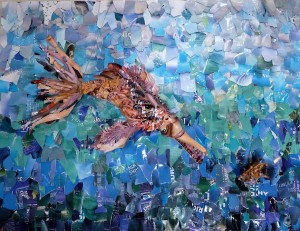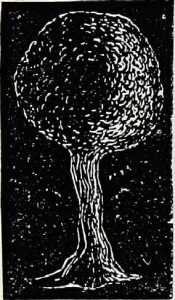A Lesson in Democracy...from Slime Moulds

Democracy is a process it’s often said. It happens when a problem makes itself known to a group of people – big or small – who then take it upon themselves to decide what to do, carry out that decision, and then carry on together until the next problem comes along.
Seen this way democracy as a process happens all the time, in many different ways, and not just among humans.
Slime moulds, a diverse and almost phantasmic class of life (because of the shapeshifting these cousins of ours do in their life cycles, see Figure 1) are also a class of democrat in their own right.

Figure 1:The ‘usual’ life stages of a slime mould' (Drawn by Patricia Collins, Scientific American, 1969)
A slime mould’s life cycle reveals its democratic credentials; for slime moulds join together, communicate with one another, make decisions, overcome problems as a group, and survive collectively.
A dyctostelid slime mould, we’ll call him Frank, starts off as a dormant spore. Frank ‘wakes up’ when he detects food. He mainly eats bacteria. Once he captures a bacterium to eat he’ll start reproducing by splitting himself in half (mitosis). He’ll do this, and his copies will do this (or have sex, meiosis), to the point where there’re thousands of Franks around. Now there’s a society of Franks.
Their main problem will be when the food runs out. It only takes one individual to start releasing a chemical signal (chemotaxis), called acrasin, to trigger the next phase in Frank’s life.
Figure 1 shows it: all those little dots in the left field represent individuals. Moving right, the lines that start to form are what individuals do when the food shortage begins – they start streaming and joining together. Let’s call this the branching stage. The slug-like animals in the middle are how Franks travel (it’s faster than going alone). And the mushroom-like stalks and fruiting bodies are how Franks propagate themselves. The fruiting bodies have dormant slime moulds in them waiting for the wind to shoot them off to a new bit of land with more bacteria to eat and for this process to start again.
Misidentification and metaphor
It was, in part, their branching stage which led slime moulds to be misclassified as a type of fungus because the branching they form by coming together looks like mycelium or the network of delicate fibres that a mushroom sinks into its food.

A mushroom’s mycelium (Photo by Kirill Ignatyev)
The debunking of that misclassification happened when researchers with new technologies realised that dyctostelid ‘mycelium’ was not the product of one life, but of thousands of lives. Individuals branch not only to form slugs and find new places to eat but also to rapidly communicate between each other about the changes happening in their environment.
This is why slime moulds are often made sense of using words from the vocabulary of democracy: it’s, in this instance anyway, because they live together, face the same problem, overcome the problem, and survive as a group (for a deeper engagement with the ideas of democracy, nonhumans, and evolution, see Evolutionary Basic Democracy).
The life cycle, but especially the faux-mycelium stage, of slime moulds makes for a great biological analogy for our own democratic politics. Following the argument made by Laurence Whitehead, that imagery borrowed from biology can be used as an aid in the rhetorical redescription of democratic processes, my aim is to draw metaphor between dyctostelid slime mould ‘mycelium’ and men (us humans of all genders and sexualities).
‘Human mycelium’ missing
A slime mould society is good at ‘talking’ about their immediate environment. They can collectively recognize and respond to a problem that threatens their survival. They do, effectively, what we want to do…but cannot.
For somewhere in time democracy lost one of its traditions, part of its original mos maiorum, which is the ability for an entire people to rapidly communicate to one another the changing reality of their political environment. As journalist Chris Zappone recently opined, democracies have lost their narrative and consequently their ability to both recognize and act against their foes.
We can’t do what the slime mould does even though we produce our own types of networks that resemble mycelium (see Figure 2) – even though we have oral, written and embodied languages. We’re linked in diverse ways yet silent across borders, bus seats, and train aisles about the political ecosystem we share.
.png)
Figure 2 – Examples of men’s ‘mycelia’
(Left to right: a twitter network, a North American ‘light’ network, and a global flight network)
I agree with John Dryzek who argues that we live in a divided world and, consequently, are not able to form a communicative network that encompasses all supposed seven billion of us, the totality of our specie. That’s our first shortcoming: global, international even, human mycelium is beyond our present capacity to form – there are too many language barriers, too many cultural contexts, too much difference.
Let’s confine our analysis then to a nation-state or country.
Michael Geisler’s voice now rings in my ears as I read his sentences aloud: “We must step back for a moment and first remind ourselves of what a ‘nation’ is. There is considerable debate [about] nationalism about what makes a nation a nation, about the origins of nations” (p. xiv).
So too is there debate about who the people of a country are. Do the people inside a country know each other? Do they discuss about their political circumstance? Do they have, as Aristotle might’ve liked his philosopher-kings to have, a shared agreement about what their perfect democrat would look like and how far off they are from finding someone that embodies it?
Take a look at Australia, New Zealand, the United Kingdom, Canada, the USA, Kenya, South Africa, Ireland, Cameroon, or Fiji – no communicative network of this variety, no mycelium made of men talking about their political environment, is to be found in these places or in other countries like them.
“Scale, scale is the problem!” cries an imagined figure of Kevin Cox who’s work on the spaces of political engagement now occupies my mind. Regions, localities, and neighbourhoods are where this mycelium can be found.
Trust, this may be true especially if we’re talking about neighbourhoods with but a few people living in them. But, I countermand, such a mycelium – I have empirical reasons to believe – wouldn’t habitually be about the political environment these people are in. And if it were about their political environment the mycelium seldom transforms into its next iteration, the form of a political animal that can travel faster than anyone of its members might on its own (by this I mean collective organization to amplify the power of all individuals), to overcome the problem the group is facing.

“Leviathan” by Chris Ritson (made entirely from magazines)
Qualifying democratic associations
Let’s come back to my argument: a dyctostelid slime mould’s life cycle is an apt metaphor for a democratic process. It first requires individuals, many thousands of them, then a coming together of these individuals when someone starts signalling that there’s a problem, then an aggregation of individuals who transmogrify themselves into a mighty beast, and then finally a return to individualism, the preoccupations of the self, and so on, after the problem has been collectively overcome.
“But this does happen,” you say. Indeed, it’s part of the premise underlying associative democracy. It’s usually the case, however, that associations are echo-chambers because their memberships consists of individuals passionate about overcoming whatever problems the associations are built around.
In this realization rests the risk, as Cass Sunstein argues, of fragmentation: “the increased power of individual choice allows people to sort themselves into innumerable homogeneous groups, which often results in amplifying their preexisting views” (p. 2). This, I qualify, is certainly a valid democratic association – just not the mycelium of men.
To end, the mycelium of men is the joining together of a heterogeneous people, one that first needs to aggregate when a political problem is flagged by one or more of its members, then form a consensus about what’s to be done, and only then create an heterodox political Leviathan – not a single-issue-amplified rage monster.
Now, don’t get me wrong, both are fine and needed (especially the occasional rage monster). It’s just that, as this metaphor drawn between slime mould and human points out, the mycelium of men rarely if ever exists.
“Shouldn’t it?” I ask. Are we missing out on something important here?

‘Slime Mould Fruiting Stage’
From page 83 of Ernst Heinrich Haeckel and Edwin
Ray Lankester’s book The History of Creation (1876).
This article first appeared on the Crick Centre Blog: http://www.crickcentre.org/blog/a-lesson-in-democracy-from-slime-moulds/
